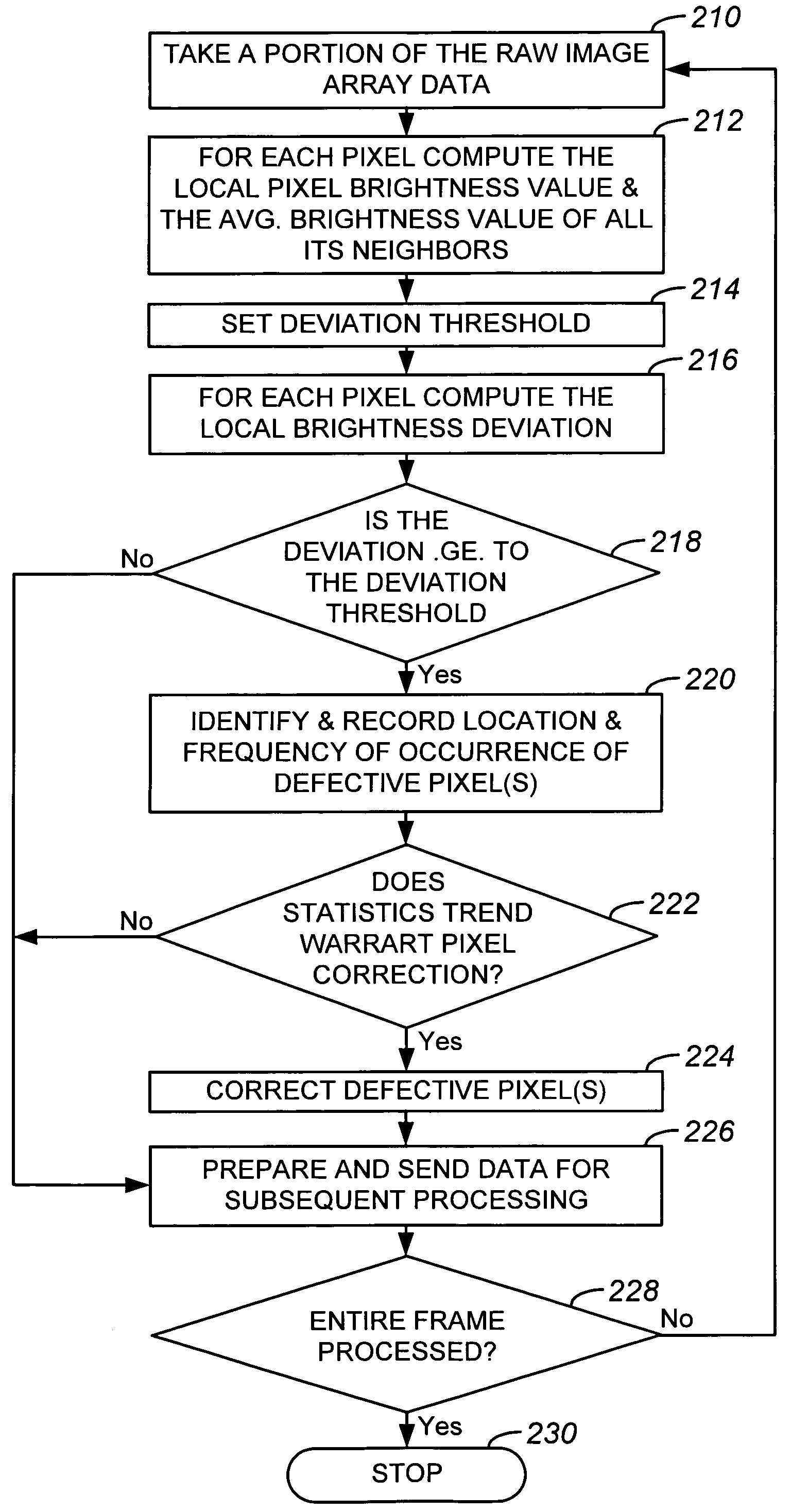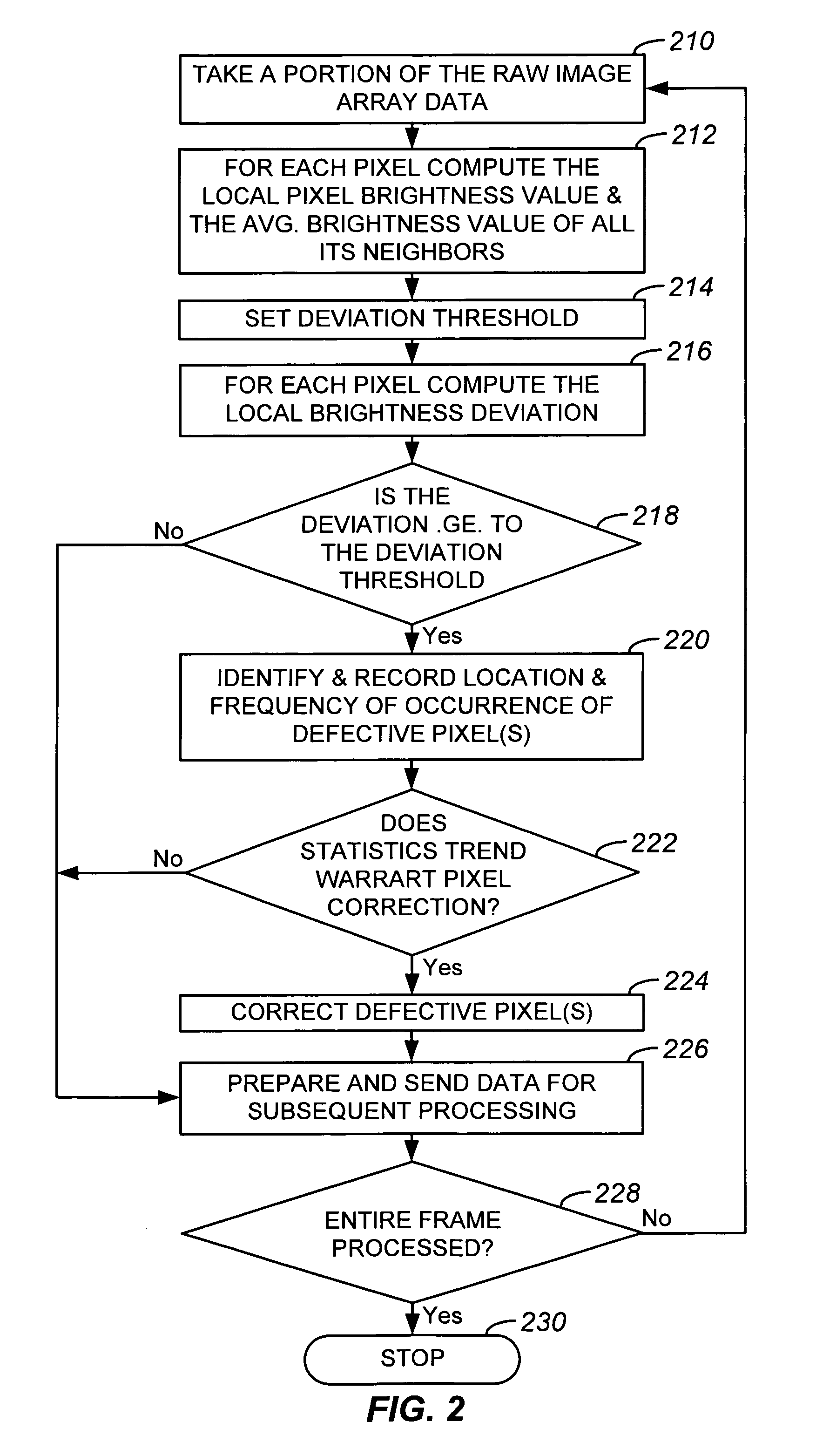Dynamic anomalous pixel detection and correction
a dynamic anomalous and pixel detection technology, applied in the direction of color signal processing circuits, color television details, television systems, etc., can solve the problems of defective pixels, unsatisfactory processing of image sensors, undesirable to the end user, etc., to achieve minimal processing load and/or video frame rate, simple statistical routine, and simple software algorithm
- Summary
- Abstract
- Description
- Claims
- Application Information
AI Technical Summary
Benefits of technology
Problems solved by technology
Method used
Image
Examples
Embodiment Construction
[0012]FIG. 1 shows an embodiment of the present invention which uses software algorithms running on an intelligent host processor 114 to dynamically correct defective or anomalous pixels. In one embodiment, the intelligent host is a server or a PC. The system includes an image sensor 110 to capture an image, an intelligent host 101 having a processor 114 to execute the computer program stored in storage 118, and a system bus 112 to facilitate device communications. The image sensor array can either be a charge-coupled device (CCD) or a complimentary metal oxide semiconductor (CMOS) image sensor array, which are typically parts of a video or still digital camera. The image sensor 110 communicates with the host 101 via an external bus 111, which can be a universal serial bus (USB) or a parallel port. Upon transfer of appropriate calls between the processor 114 and the image sensor 110, the computer program is loaded into memory 116.
[0013]The system works by reading off or scanning the...
PUM
 Login to View More
Login to View More Abstract
Description
Claims
Application Information
 Login to View More
Login to View More - R&D
- Intellectual Property
- Life Sciences
- Materials
- Tech Scout
- Unparalleled Data Quality
- Higher Quality Content
- 60% Fewer Hallucinations
Browse by: Latest US Patents, China's latest patents, Technical Efficacy Thesaurus, Application Domain, Technology Topic, Popular Technical Reports.
© 2025 PatSnap. All rights reserved.Legal|Privacy policy|Modern Slavery Act Transparency Statement|Sitemap|About US| Contact US: help@patsnap.com



